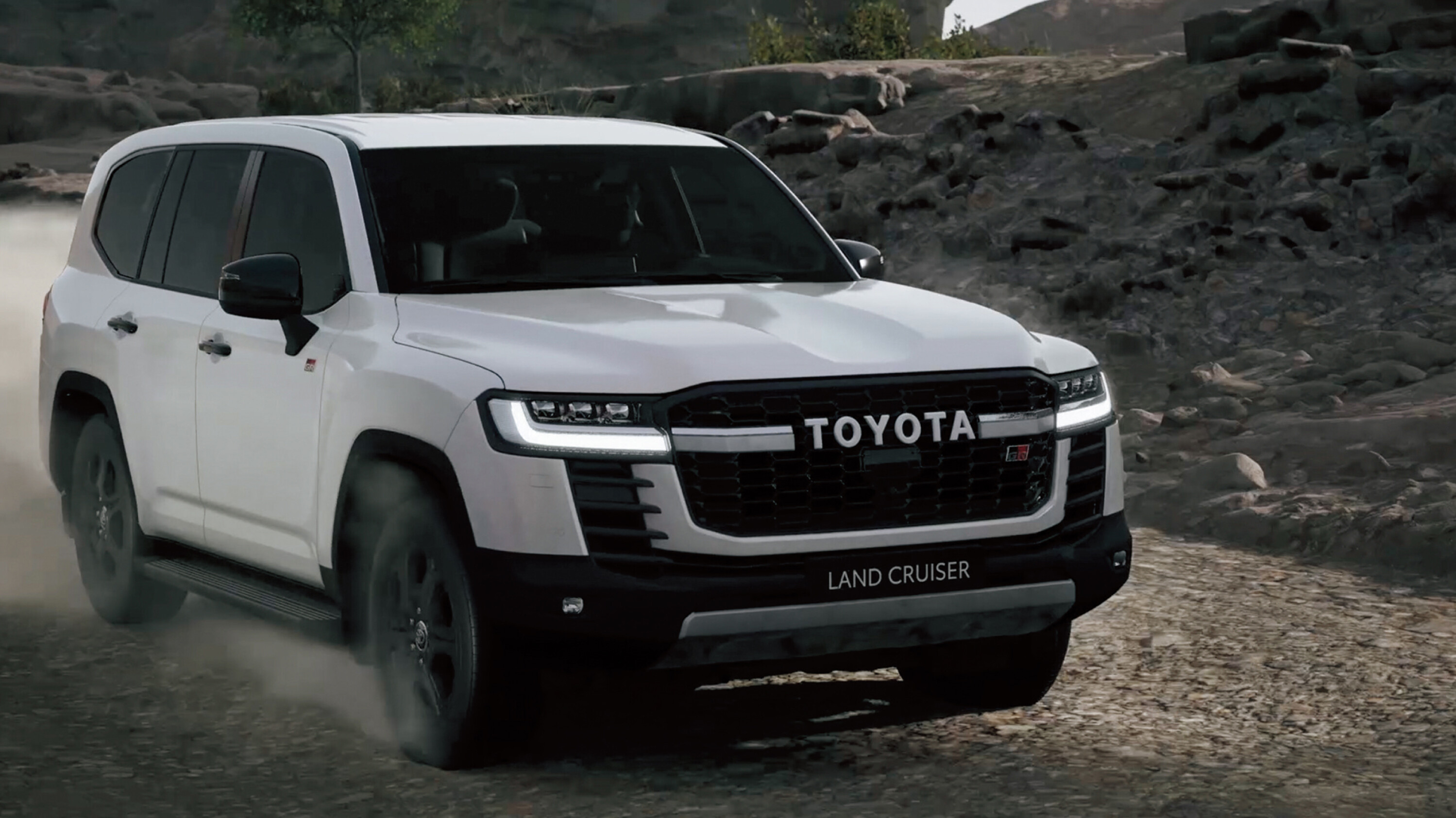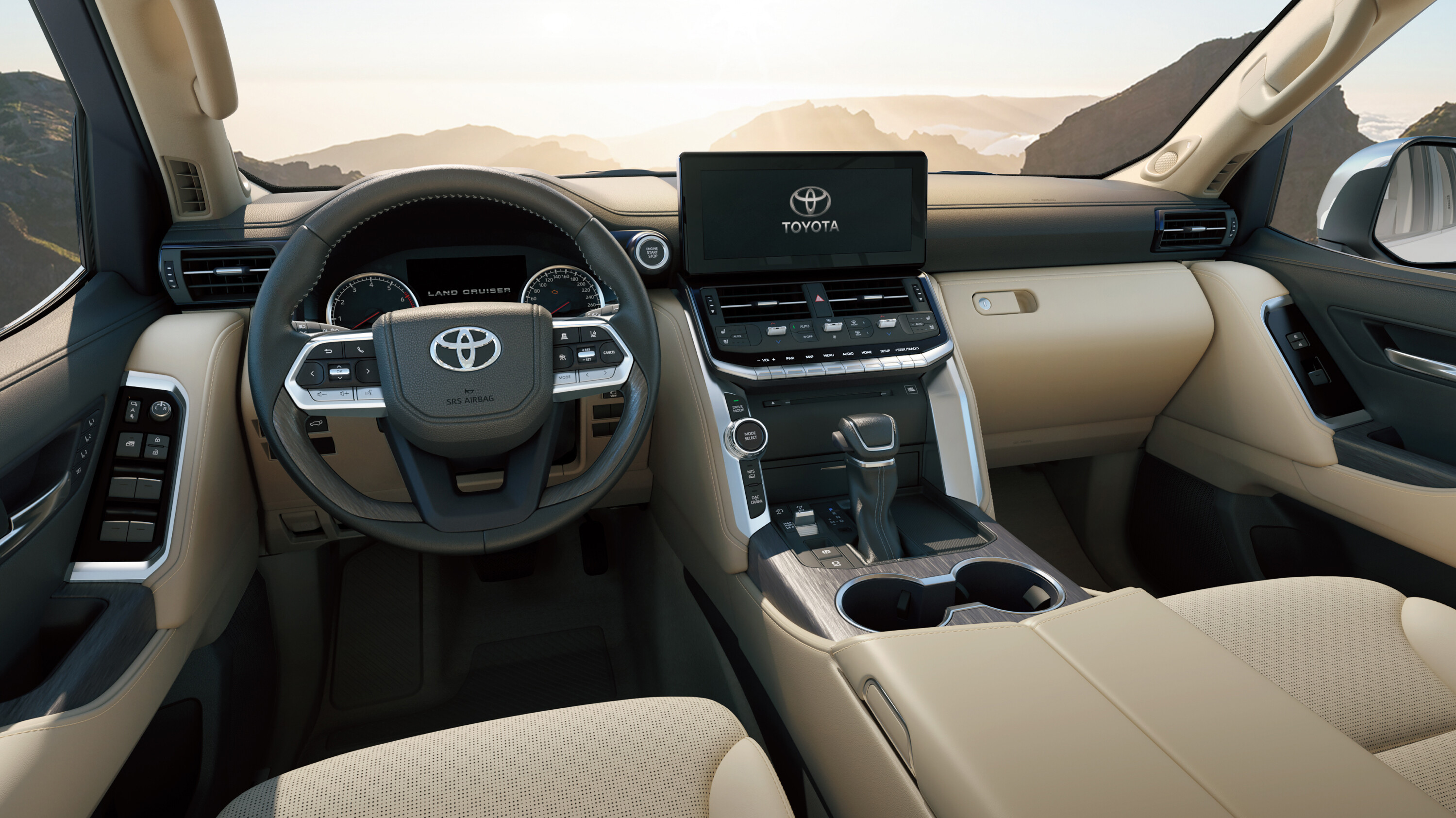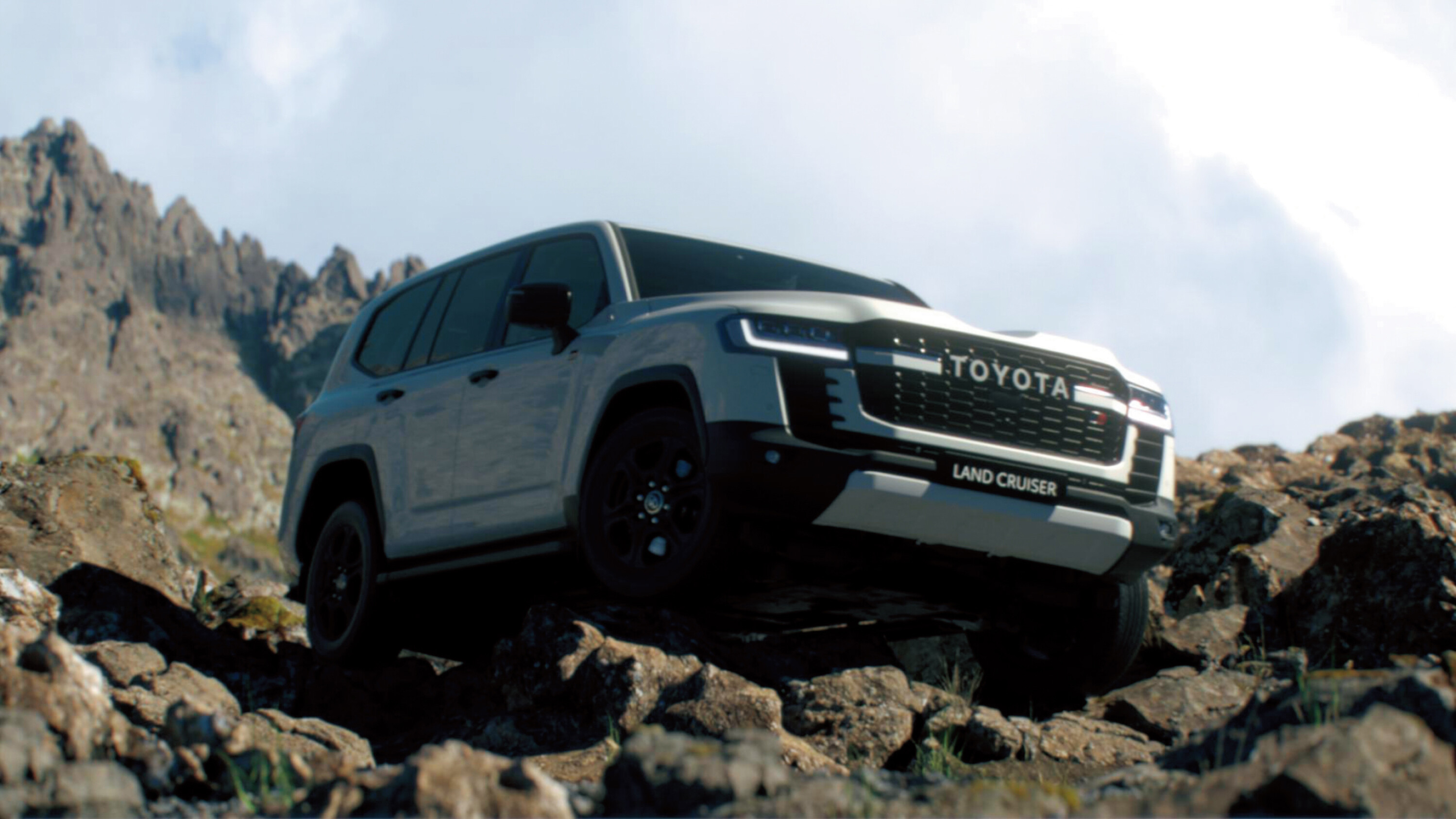- More powerful twin-turbo V6 diesel delivers 227kW and 700Nm
- Similar in size to outgoing LC200
- Due in Australia in Q4 of 2021
Here it is folks. After all the leaked spy photos and years of delays, Toyota has officially pulled the wraps off its new LandCruiser 300 Series four-wheel drive wagon.
As you see, left nothing to the imagination and clearly showed what the all-new vehicle would look like.
What they couldn’t show you though was the engine, which was speculated on just as much as photos were leaked. The official word it that the LC300 will be powered exclusively by a new F33A-FTV 3.3-litre V6 diesel engine using a pair of turbochargers to boost its outputs to 227kW and 700Nm.
Those figures are up 27kW and 50Nm respectively on the 1VD-FTE V8 that powered the current but will the number alone be enough to convince the V8-loving Cruiser owners that the new V6 is a better engine? Only time behind the wheel will tell.

21
While a turbocharged 305kW/650Nm 3.5L V6 petrol engine has been mentioned for non-Australian markets to replace the 5.7-litre petrol V8, there’s no mention of it arriving here, and why would they bother. When Toyota offered the choice of a petrol engine in the LC200 it accounted for less than two per cent of total sales. The petrol V6 is expected to gain some form of EV hybridisation at some time in the future and that could pose a more interesting proposition for Australian buyers concerned about fuel use.
The LC300’s V6 engines will be backed by a 10-speed automatic transmission and is expected to continue with full-time four-wheel drive and a two-speed transfer case. Documents leaked out of South Africa a few months back suggested that some variants of the LC300 will be offered with front and rear locking differentials, although there is nothing in this official release to confirm that.
The TNGA chassis is all new and retains IFS with a coil-sprung live rear axle. The chassis is claimed to be 120 per cent stiffer in terms of torsional rigidity, while the body and chassis combination is claimed to be up to 200kg lighter than that of the 200 Series. Much of the weight saving is expected to come from the use of lightweight panels replacing steel in some areas.

21
Toyota has lowered the centre of gravity of the 300 by using the lighter V6 engines and dropping the engine 28mm lower in the chassis and 70mm further back, to improve the car’s dynamics. The chassis also benefits from a new version of the KDSS system called E-KDSS which is capable of disconnecting both the front and rear sway bars for improved axle articulation when driving off-road.
While it’s difficult to gauge scale from these images, the 300 appears similar in size to the 200 which it will replace. Toyota says the actual size including the length, total width, and wheelbase, as well as both the departure and approach angles have been kept the same as the previous model.
The look is much squarer, with a bold, blocky front end and sharper lines down the sides and to the rear. Front and rear light assemblies are slimmer, suggesting LED lighting will be used, while the rear-most side window is partially obscured by the up-swept bodyline.
The images inside the 300 show a three-row seating for seven passengers, and they show that the third-row seat folds flat in to the rear floor when not in use instead of up to the sides, where they took up valuable cargo space.

21
Also inside, the large centre dash screen features a new Multi-Terrain Monitor that displays obstacles as viewed from the driver’s viewpoint. A forward-facing camera can be seen in the large grille on the 300. A new Multi Terrain Select system has been configured to automatically judge the road surface and selects the best driving mode.
The global reveal information shows SX, ZX, VX-R and GR Sport models, although Australian model specifications, naming and pricing won’t be revealed until closer to the release date which will be in Q4 this year.
Of particular interest is the GR Sport model, which, with its blacked-out bumpers and wheel arches, make it look like a smaller car, but it also looks to ride higher with more clearance at the front bumper. This should be an appealing model to off-road enthusiasts.
The bullbar manufacturers will be happy to see those joint-lines in the lower front bumper, which suggest it can be removed up to around the level of the bottom of the grille. The front parking sensors also appear to be in the next upper part of the plastics and not in the lower section of the bumper. These factors will allow easier design of bullbars without too much cutting of the factory plastics.

21
Toyota is also expected to offer its own range of bullbars and accessories for the LC300.

























































